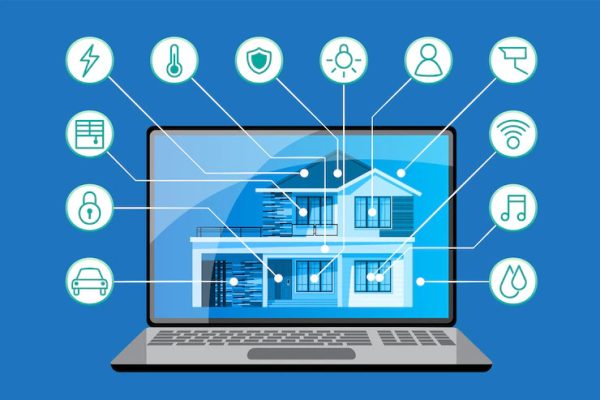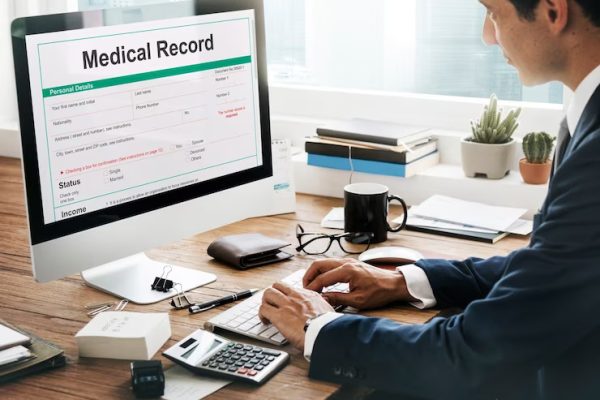Client relationships are the backbone of any successful business. It is essential for businesses to build and maintain strong relationships with their clients in order to ensure customer satisfaction and loyalty.
The importance of managing customer relationships effectively cannot be overstated. It involves understanding their needs and expectations, providing timely responses, and delivering quality services that meet their requirements. It also involves creating a positive working environment where both parties can work together efficiently.
By managing the relationships effectively, businesses can increase customer retention rates, build trust, and create long-term partnerships with their clients. This will help them to increase revenue and gain a competitive advantage in the market.
Here are 12 tips to manage client relationships effectively:
1. Build a Personal Connection.
It’s important to build a personal connection with your clients. Instead of just sending an invoice, ask them questions and share personal details about yourself. This will make them feel like they’ve met someone they can trust and be open with you.
- Don’t be afraid to ask questions! You may not know the answers if you’re in touch with someone on a different level than yourself, but it’s important for both parties involved in the relationship (you and your client). There isn’t any confusion or awkwardness between the two parties at all times. So keep asking questions until everything is clear between both parties.
2. Commit to Being a Problem Solver.
If you want to be a successful consultant, it’s important to understand that your clients’ problems are only part of the story. Your job is not just to solve their problems; you need to help them solve their problems as well.
In order for this type of relationship between client and consultant (or doctor or teacher) to succeed, both parties have different roles and responsibilities:
- The consultant takes on the role of problem solver by providing guidance and advice about how best to approach solving each issue at hand.
- The client takes on the role of solution provider by taking action on what has been recommended or suggested by their consultant(s).
3. Frequently Check in on Your Clients.
Checking in on your clients frequently is an important part of customer service and helps to build strong relationships with them.
It allows you to stay up-to-date with their needs and expectations, as well as provide timely feedback and support.
Additionally, it provides you with an opportunity to identify potential issues before they become major problems, allowing you to take proactive steps towards resolving them. It is a great way to ensure a successful long-term relationship with them.
Tips:
- Check in at least once a month.
- Check in on a regular basis.
- Use technology to make it easier for you and your clients to stay in touch. For example, if you use email as the main way of communicating with your clients, set up filters. So that all important emails are automatically archived or sent to another folder when they’re read (or even just read). You could also set up an automated reminder system. So that every time someone sends an important email to you—whether it’s about work or not—the system will send them an automated message asking if there’s anything else that needs doing before their next appointment. So they don’t forget anything else important!
4. Never Miss an Opportunity to Say Thank You.
Thank you notes are one of the best ways to show your appreciation for clients and colleagues. They show that you care about their business to grow, which will make them more likely to refer other clients your way.
Unfortunately, most people don’t write these notes as often as they should. When they do send out thank-you letters, they’re often too short or generic (or both).
Tips:
- Write in advance! If possible, ask someone at work who’s already been in touch with your client if there are any special occasions coming up where you might want a gift certificate or other small gift item that would be appropriate; then make sure those items are included in whatever else is being purchased from them (if applicable). This is especially helpful if those items aren’t always needed because they’re being used primarily by people who aren’t usually associated with your company, but whose businesses use similar products.
5. Never Stop Learning About Your Clients and Their Business.
It is essential to never stop learning about your clients and their business. Understanding the needs and goals of your clients is key to providing them with the best possible solutions.
By learning more about their business, you can better understand their target audience, identify potential opportunities for growth, and create content that resonates with them.
- Keep learning about your clients and their business to deliver them the top-notch service. Make sure you are up to date on their current needs, challenges, and opportunities.
6. Meet Clients Face-to-face.
Meetings are a great way to build relationships with your clients and get to know them better. Meetings allow you to discuss important topics face-to-face, which helps build trust between the two of you.
You can also use meetings as an opportunity for brainstorming or problem solving together. So, always find a way to meet the client in person.
7. Use a CRM
Customer relationship management (CRM) is an essential tool for any business that wants to build strong relationships with its customers and keep them coming back. CRM helps businesses understand their customers better, track customer interactions, and manage customer data in one centralized system.
CRM allows businesses to manage customer relationships more effectively by providing a single source of truth for sales, marketing, and service teams.
It enables companies to provide consistent customer experiences across different channels, create personalized offers based on customer data, and automate processes such as lead scoring and segmentation.
By leveraging the power of CRM, businesses can improve their relationships with customers and increase loyalty. A functional CRM like HubSpot can be an ideal choice to deliver the super customer service experience.
How can a CRM help you?
- CRM helps to track each client’s progress.
- Keep track of information about your clients.
- Use a CRM to see what you have done for your clients in the past.
8. Set Clear Expectations
Let’s face it. Clients want to know what they are paying for, and what you can do for them. They also want to know how long it will take, how much it will cost and when the services are expected to be completed.
If a client doesn’t check in regularly with their project manager or designer, there is no way of knowing if progress is being made or if there are any issues that need addressing.
In order for your relationship with clients (and their expectations) not only stay intact but actually thrive over time, then make sure that you establish clear expectations from the outset of any project or engagement together.
9. Have a Pre-onboarding Meeting
Pre-onboarding meetings are an important part to deliver effective customer service. It’s an opportunity for brands and potential customers to get to know each other better, and discuss expectations.
Additionally, these meetings give companies insight into the client’s personality so they can be sure they are delivering the customer service based on the customer persona.
Ultimately, pre-onboarding meetings help ensure that both parties have a successful working relationship.
Tips:
- Make sure you have all the information you need about the client.
- Ask questions about their goals, problems, and needs.
- Review the deliverables, timeline and expectations.
- Set an agenda and time frame for your meeting (this is also a good time to share any updates or changes in plans). If possible, meet in person if it’s appropriate for both parties’ schedules; video conferencing can be effective. When there are too many people involved who cannot meet face-to-face at one place at one time.
10. Talk, Don’t Just Email.
When you’re talking to a client, it’s best to use the phone or in person. Email is not a good way to communicate with clients because it can be misunderstood.
If you email your customer service department and ask them to fix something on your website, they may not understand what you want fixed or how they should go about fixing it.
You could also misinterpret their email if they don’t include any details in their message (and/or send messages late at night).
11. Don’t Be Afraid to Say No.
Don’t be afraid to say no. The worst thing you could do is let a client’s request for a time-consuming task or project distract you from the task at hand, which is why it’s important to communicate your availability clearly and honestly.
As an independent contractor, you are ultimately responsible for all aspects of your work—from booking clients and setting up meetings with them through their feedback on what went well or poorly during their experience with you.
If something comes up that would take up too much of your time (e.g., working on multiple projects simultaneously), let your client know that you’re unable to accommodate these requests at present. So, he can find someone else who can help him out instead!
12. Put Your Foot Down in an Appropriate Way.
It’s not easy to say no to a client. In fact, it’s downright difficult—especially when you’re already working with them! But if you don’t have the self-control or confidence to put your foot down in an appropriate way, then chances are you’ll lose clients over time.
Instead of trying to avoid saying no altogether (which is neither possible nor advisable), ask yourself:
- What do I want from this relationship?
- How do I want my work life and personal life to be different from each other?
And then try saying something along these lines: “I don’t know if this project is right for me right now but thanks for asking me anyway. Let’s keep talking about it so we can figure out how best to move forward together.”
If someone ever asks why they shouldn’t take action on behalf of themselves or another person—and that person has just been given permission by another person who knows well what needs doing.
They’ll probably feel encouraged enough by this kind of reassurance that they’ll continue through whatever process needs completing before taking action anyway!
Conclusion
As you can see, there are many ways to manage client relationships effectively. The key is to find the right methods for your business, and then make sure to practice those methods on a regular basis. This will help ensure that your clients feel respected, valued and supported throughout the process.
And, if you want to manage client relationships effectively then HubSpot CRM can be a perfect solution for you.
It comes with all the functions and features that you really need to manage the customer relationships effectively. Sign Up now and enjoy FREE trial.






Hello! I realize this is sort of off-topic but I needed to ask.
Does running a well-established blog like yours require a large amount of work?
I am completely new to blogging but I do write in my diary every day.
I’d like to start a blog so I can easily share my experience and views online.
Please let me know if you have any suggestions or tips for new
aspiring bloggers. Thankyou!
Awesome! Its truly remarkable post, I have got much clear idea concerning from this piece of writing.
It’s the best time to make some plans for the future and it is
time to be happy. I’ve read this submit and if I could
I wish to recommend you few attention-grabbing issues
or suggestions. Perhaps you could write next articles referring
to this article. I want to read more issues about it!
Your method of explaining all in this piece of writing is genuinely nice, all be able to simply know it, Thanks a lot.
What’s up, I want to subscribe for this website to take most recent updates, so where
can i do it please assist.
Fine way of describing, and nice paragraph to obtain facts regarding my presentation subject matter, which i
am going to present in school.
This info is priceless. Where can I find out more?
Wow, amazing weblog layout! How lengthy have you been running a blog for?
you make blogging glance easy. The total look
of your web site is great, let alone the content!
Excellent post. I used to be checking constantly this weblog and
I’m inspired! Extremely helpful information particularly the ultimate part 🙂 I deal with such information a lot.
I was looking for this particular information for a very lengthy time.
Thank you and good luck.